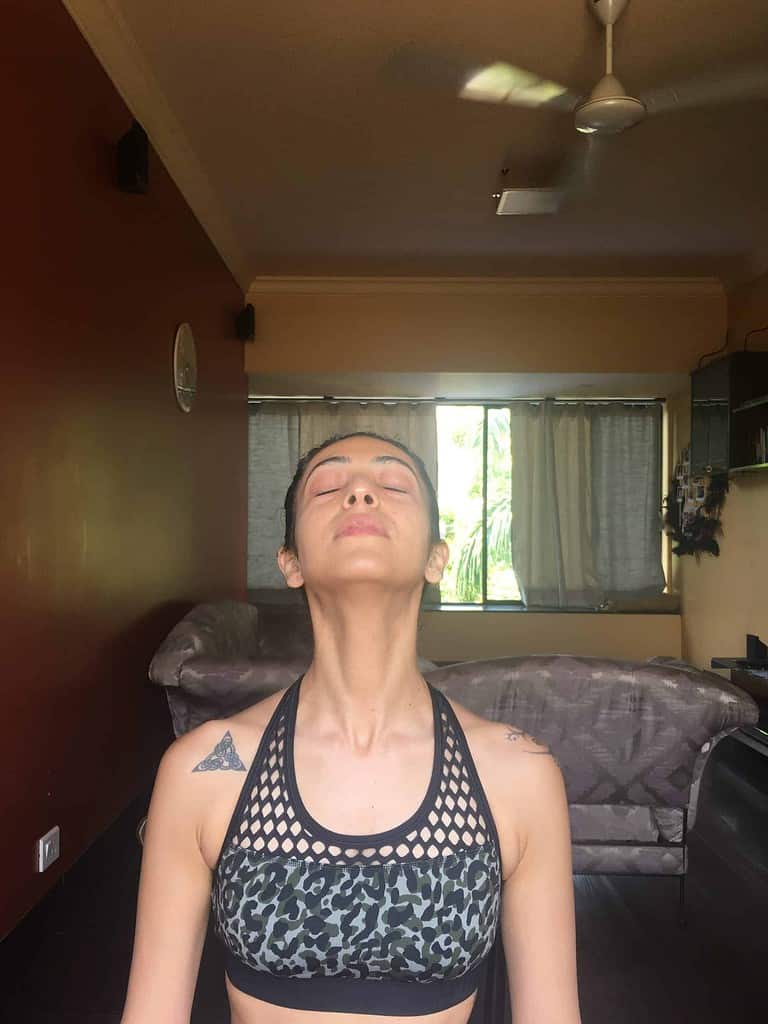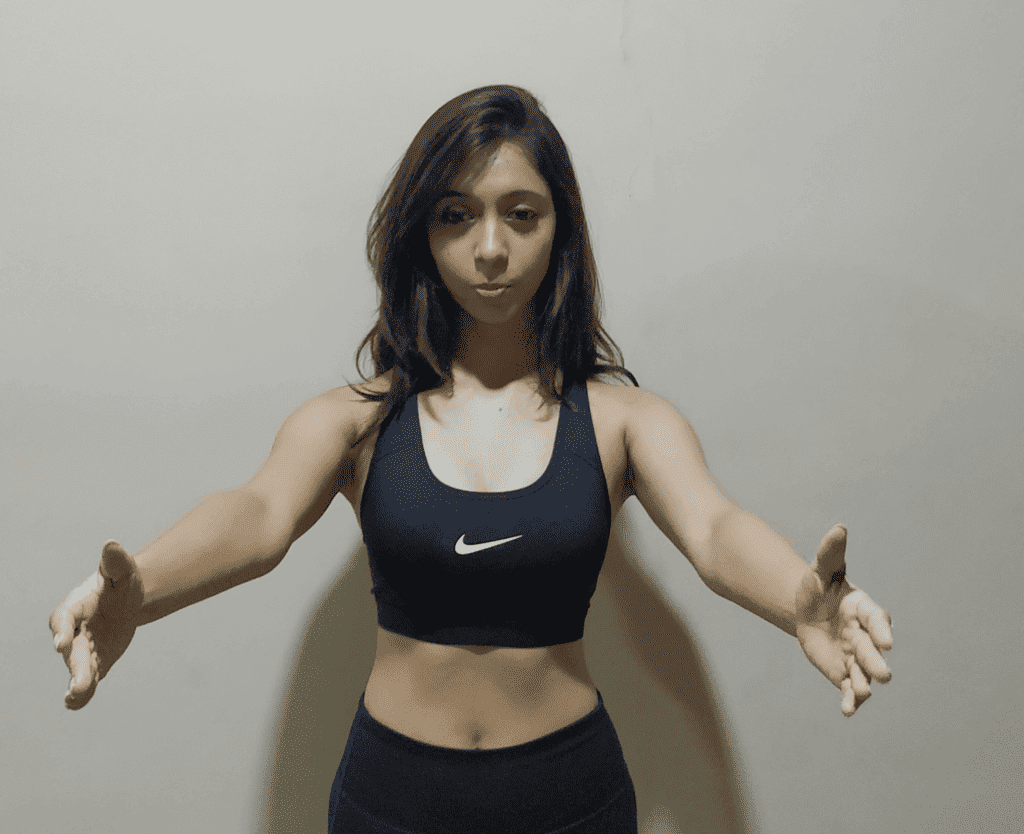Flexibility affects Function

A few months back there was a video circulating on social media where one guy challenged a body-builder to remove a sticker from his mid-back. That beefed-up guy tried every move but he barely reached the top of his neck and lower back with his palms. While the other guy, who wasn’t as strong-looking (even had a little paunch), easily reached the sticker on his back and removed it. We all had a laugh at the expense of the rugged muscular man, but how many of us could have done it ourselves? In your daily activities, how many of you struggle to bend forward to lift something off the floor?
It’s true that really big and muscular people struggle with simple functional tasks because they lack flexibility in their muscles. They might be lifting 60 kilograms while doing chest presses in the gym, but they won’t be able to twist to pick up a napkin when it falls to the floor. And not only those of us who do heavy weight lifting but also those who lead sedentary lifestyles, sitting in one position for hours, can have tight muscles which hinder our movements. No matter how strong you might appear physically, it all boils down to ease of movement in daily functions. And for that we need flexibility.
If you walk through any gym, you will most probably overhear people use the words “mobility” and “flexibility” interchangeably. However, they aren’t the same. Mobility is the range of motion of a joint and flexibility is the ability of the soft tissues like muscles and connective tissues to lengthen. Mobility of joints is one factor that affects flexibility and vice versa. For instance, when we talk of Hypermobility, it is a genetic condition affecting the mobility of joints which make a person super flexible as their connective tissues are lax. We need a balance of stability and mobility in the joints, and strength and flexibility in the muscles, along with proper neural feedback to allow for optimum movement.
Out of these, the neural feedback is related to the health of the nervous system and is not directly in our control. The second component of the joint configuration is also genetic. However, the connective tissue viz tendons, ligaments and muscle fascia which form part of the joint configuration and limit our flexibility, can be moulded up to a certain age.
- Tendons transmit force by connecting bones to muscles and are relatively stiff. They have enormous tensile strength and a low tolerance for stretching. They shouldn’t be stretched as they can tear.
- Ligaments, on the other hand, can stretch a little more than tendons. They form the joint structure that hold bone to bone and they limit joint mobility. However, stretching the ligament beyond a certain extent for long can cause the ligament to weaken by the stress. This is called ligament creep. This can limit the range of movement and load-bearing capacity of a joint. And injured ligaments take very long to heal. Thus, we should keep our knees and elbow soft while exercising to prevent stress on the ligaments in those joints.
- Muscle fascia, a crucial component, form 30 per cent of the muscle’s mass and provide structure to the muscle fibres. Healthy stimulation of the fascia aids flexibility of movement.
- Most important, though, are our muscles, which form the active component in movement and are under our voluntary control to a certain extent. We can work on increasing flexibility by training our muscles with the right physical exercises.
To increase flexibility, we need to lengthen the tight muscles and strengthen the weak muscles on the opposite side to create a balanced musculature. There are two types of techniques for improving flexibility: Static Stretching and Dynamic Stretching.
Static Stretching
It is holding a position without moving for 30 seconds up to a minute. It is a great way to cool down at the end of the workout.
Dynamic Stretching
It is taking the joint into the full range of motion, by moving repetitively from the inner to the outer range of motion and back.
In Pilates, we use both static and dynamic stretching. However, in Pilates, we do not recommend staying in a position beyond 60 seconds as it can reduce the sensitivity of receptors to tension. A lot of Pilates movements are dynamic stretches. Throughout our workouts at Moushu’s Pilates, we incorporate a mix of strengthening and balance exercises with exercises for improving flexibility.
Here are a few stretches for you to try at home. Repeat each move 6 to 8 times:
Mermaid for Quadratus Lumborum:
Sit equally on both sit bones, fold one leg into a cross-legged position and fold one leg into a kneeling position. Place your hand on the side of the crossed leg and raise your opposite arm up and over, imagining that there is a ball underneath your ribs and you are bending over and away from it. Do not lift your left sit bone. Breathe into the opened-out lung. Release the stretch. Repeat on the other side.

Hip Flexor Stretch:
Go into a kneeling lunge position. Make sure the front knee is above the ankle and back hip is above the knee. Make sure your headlights are facing forwards and shift your body weight to the front leg. And move back to the starting position. Repeat and then switch legs.


Neck Side Stretch:
Place one hand on top of your head. Gently guide your ear towards the same shoulder and slide the fingertips of the opposite arm down on your thigh to reach away, stretching through the neck muscles. Then release. Repeat on both sides. Make sure to go slow and not jerk your head.

Neck Forward and Upward Stretch: Gently tilt your head down, leading with your chin as if you are nodding. As you inhale, tilt your head up, and look towards the ceiling. Make sure to go slowly and not jerk your neck.


Pectoral Chest: Hold your hands next to your body. As you inhale, draw your arms up over your head into a V without extending your chest. Exhale and lower your arms. Repeat.


Planter Flexion- Calf stretch:
Get into a plank and then lift your hips up into a pike. Try to touch your heels on the ground. And lower back into plank.


Our body is highly adaptable and whichever posture we maintain it in for a longer duration, it starts changing structurally to reflect those patterns. So, to counter our wrong postures, we need to incorporate Pilates’ dynamic stretching which lengthens out the tight muscles and improves functional movements. Whether you are a runner, sportsperson or a regular at the gym, stretching, especially dynamic stretching, has to be an integral part of your daily workout.
We are conducting classes online so that you don’t have to worry about becoming stiff while working from home. Check out the schedule here.
Read also about why seniors/active agers should do Pilates.
